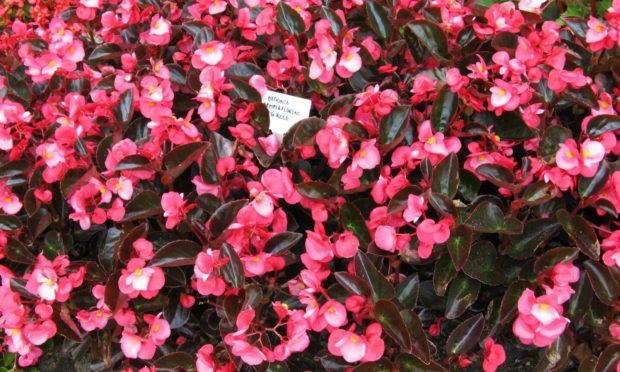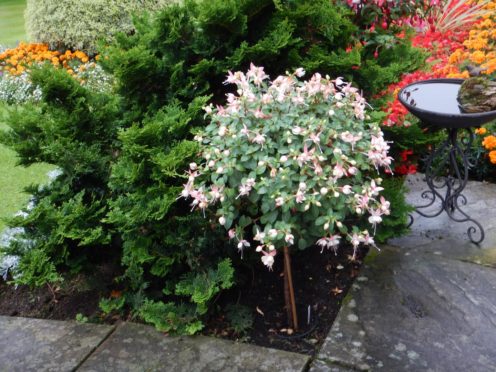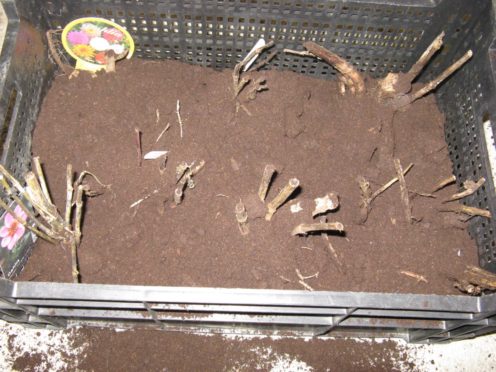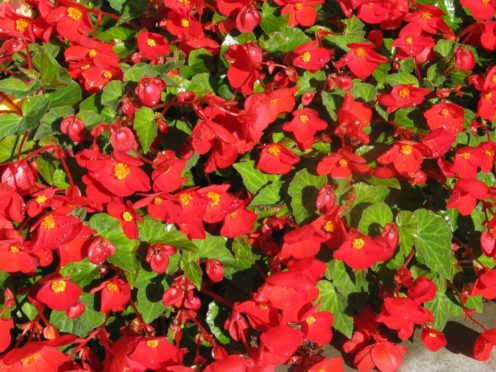It will soon be time to start thinking about removing summer flowering bedding plants from our tubs, baskets and borders.
Why? Because most of them are described as being “half hardy”, they would not be able to cope with our winter weather.
Some are described as hardy annuals (HAs), but they have one season’s growth only – from a seed in spring, flower, then shed seeds for the following year. The question arises – do we just throw all the bedding plants on the compost heap, and if not, why not? Answer – you can if you like, BUT some are actually half hardy perennials (HHPs) which, if protected safely from our winter weather, will perform again next year.
The challenging side to that argument would be to keep the perennials, where they will be safe over the winter months and be fit to be planted out again next spring. Whilst the annual cost of a fresh start has to be taken in to account, the real challenge to gardeners of keeping the HHPs is more engaging – in my view.
The most commonest HHPs to provide summer cover are probably geraniums, ivy-leaved pelargoniums, fuchsias and two types of begonia, but you could add dahlias and Chrysanthemums to the list because they too are HHPs.
There is a significant bonus to be added to this way of working – you get to try your hand at propagation from these perennials, producing a batch of fresh young plants from cuttings which will grow to take the place of the old (stock) plants next year in your containers and borders. In addition, if you are successful, there are often “spares” to exchange with chums or to offer for sale at your gardening club spring show.
Get sorting
First move – sort out the annuals from the perennials. I was asked that very question just the other day about pansies. Are they annual or perennial? (They are perennial)
The question set me thinking because you would treat plants differently, depending on their classification. Annuals can be consigned to the compost heap as they live for one growing season only. Perennial herbaceous plants will last for several years, taking a rest over the winter months to sprout afresh when days lengthen and soil temperatures rise in the new year. The vulnerability with some of the perennials which we use for bedding schemes is that they are not winter hardy, hence the title HHP – half hardy perennials.
The following comments are aimed at the many new gardeners in our midst! Let me concentrate on these popular perennials and how to deal with them – geraniums, fuchsias and ivy-leaved pelargoniums can be lifted and potted up next month, using a general purpose compost. The tops can be pruned back to 5-10cm, plants given a watering to settle them in the pots and stood in a sheltered spot or cold frame for a week or two. After that they can be housed in a porch or windowsill if you don’t have a greenhouse.
Keep them in good light and in temperatures above 5C. They are simply ticking over. From time to time they may need to be watered but ca’ cannie! My overwintering plants will all be housed in the the 6 x 4 section of the greenhouse, which is lined with bubble polythene. Come the really cold weather, I may have to switch on the fan heater to keep the temperature from getting too near freezing point.
Begonias
Now to the begonias; there are two main types used for tubs, baskets and bedding out. One lot, like Flamboyant, are growing from tubers, the other type, begonia semper florens, have a normal root system to be treated like geraniums, but frankly, I wouldn’t bother. In my experience they are quite difficult to overwinter so I consign them to the compost heap along with the annuals. The tuberous rooted types can be lifted, allowing the foliage to dry off before storing them in a frost-free environment.
Some of you may remember my dad’s answer to that question when I interviewed him on Beechgrove. “Under the bed in the spare room with the permission of the Household Manager!”
Treatment of the Dahlia tubers is not dissimilar; once the foliage has been allowed to wither and die off, the stems cut back to 10cm, they can then be stored in a cardboard box and covered with old compost or mulching material to add a bit of insulation before moving them in the dark in a shed or garage. Chrysanthemum stems can be cut back to about the same height then the roots (referred to as chrysanthemum “stools”) can be potted and treated the same as the fuchsias, etc.



